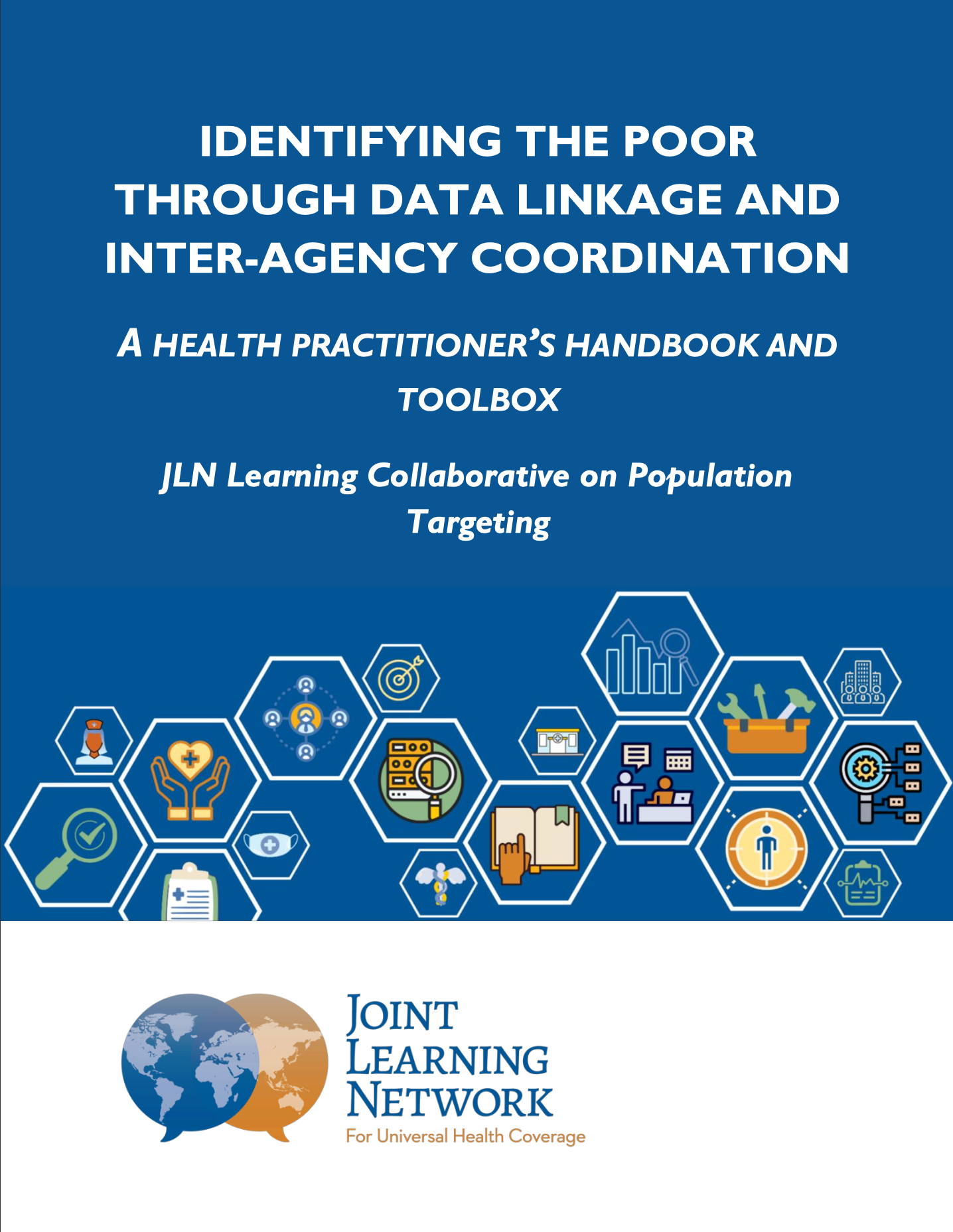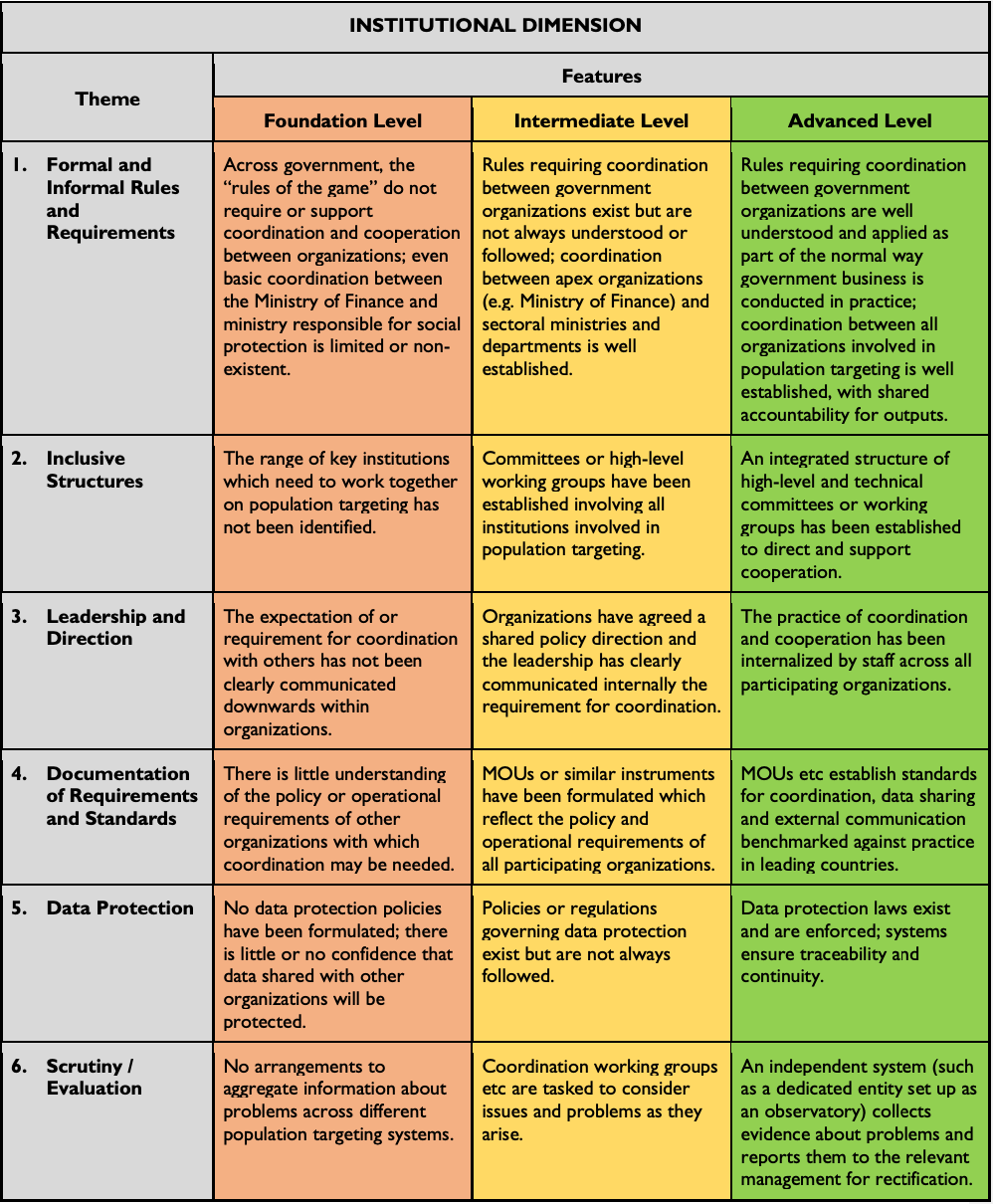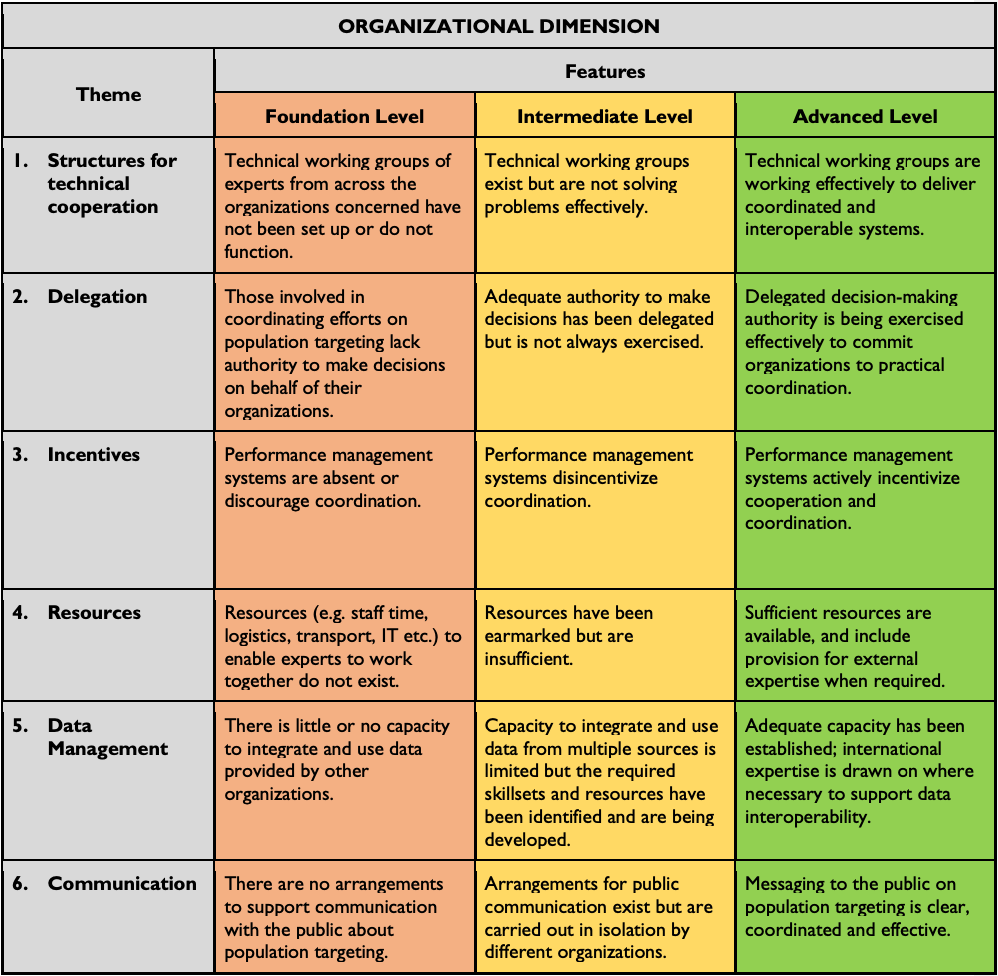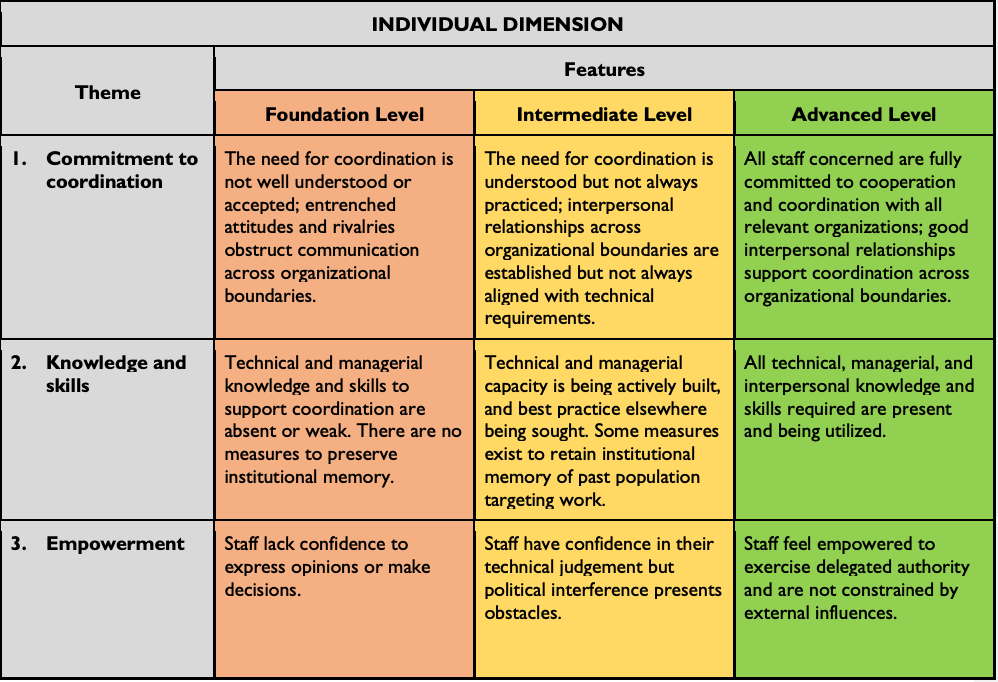Institutional Coordination Between Health and Non-health Agencies on Population Targeting

A Health Practitioner’s Handbook and Toolbox for Identifying the Poor and Vulnerable > Institutional Coordination Between Health and Non-health Agencies on Population Targeting
This toolbox is supplementary to the Health Practitioner’s Handbook, and can be used to address the specific next steps identified by the Handbook’s diagnostics. For more information about how the handbook and toolbox can work together, please visit the handbook page.
On this page you can access Institutional Coordination resources designed to help health agencies diagnose their progress towards inter-agency coordination for population targeting. Separated by dimensions, each dimension has a specific set of ‘actions to improve’ linked to it, as well as a curated selection of implementation tools to help with these tasks.
How well does your agency work with others on population targeting?
Fragmentation is a common feature of population targeting systems in low- and middle-income countries. It can be challenging to agree an efficient sharing of responsibilities as different agencies and reforms are simultaneously evolving and developing their own approaches for programs over time. Health agencies can often find themselves duplicating population targeting functions that other ministries and programs are doing in some form, or, on the other hand, required to use data from other agencies that are not well suited to health’s needs.
The maturity matrix below is designed to help health leaders understand where they could improve the efficiency and effectiveness of population targeting through better coordination with other agencies. It is organized into three domains – the institutional, organizational and individual – all of which are necessary to improve coordination on population targeting.
- Institutional dimension is concerned with formal and informal requirements and expectations which together make up what have been called the “rules of the game” or the enabling environment within which government bodies interact and work together.
- Organizational dimension is concerned with what happens within those agencies described above, and the way in which they are resourced, structured and managed to fulfill their objectives.
- Individual dimension is concerned with the knowledge, skills and attitudes of the members of staff actively involved in population targeting initiatives, and their managers.
Full descriptions of all of the concepts, domains and much more detail besides can be found in the institutional coordination chapter of the Health Practitioners Handbook to Identifying the Poor and Vulnerable.

The following tools have been created and curated to assist implementers and practitioners with the key action and decision areas for the Institutional Dimension:
Tool A1: Question guide for identifying underlying barriers to institutional coordination
Tool A2: Template to review relevant legal mandates across agencies
Tool A3: Messaging guide to encourage agencies to engage in closer coordination
A5: Transform. (2017) “Governance for Social Protection Systems: Institutions, Organizational Structure and Capacity – Manual for a Leadership and Transformation Curriculum On Building and Managing Social Protection Floors in Africa” Transform.
A6: Leite, P. et al. (2017) “Social Registries for Social Assistance and Beyond: A Guidance Note & Assessment Tool” World Bank Group.
A7: International Labor Organization. (2021) “Governance of social protection systems: a learning journey Module #2: Information and communication technologies and data” International Labor Organization. ISBN: 978-9-22-035072-0 (Web PDF).

The following tools have been created and curated to assist implementers and practitioners with the key action and decision areas for the Organizational Dimension:
Tool A10: Example terms of reference for technical working groups
Tool A11: Examples of a transparent ‘public face’ for integrated social protection initiatives
A12: International Labor Organization, (2021) “Governance of social protection systems: a learning journey – Module #1: Coordination”. ILO.
A13: Transform, (2017) “Management Information Systems and Approaches to Data Integration – Manual for a Leadership and Transformation Curriculum On Building and Managing Social Protection Floors in Africa” Transform.

The following tools have been created and curated to assist implementers and practitioners with the key action and decision areas for the Individual Dimension:
Tool A14: Checklist of actions for improving individual cooperation across agencies
Tool A15: Agenda and facilitator materials for running a multi-agency workshop to discuss closer cooperation
A17: Colville, J. (2008) “Capacity Assessment Methodology User’s Guide” Capacity Development Group Bureau for Development Policy. UNDP.
Want to see these tools in action? Read the implementation country case study for Liberia here.
Liberia Inter-Agency Technical Working Group Implementation Case study
